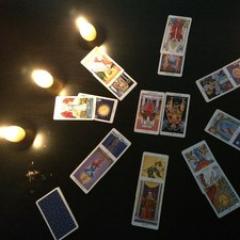Indian Ocean here are the facts of the presentation.

- Golovna
- Gadgets
- GEOGRAPHICAL POSITION.
- WITH THE HISTORY OF THE OCEAN.

FEATURES OF NATURE OF THE OCEAN.
SEEN STATE ACTIVITY IN THE OCEAN.

MAP OF THE INDIAN OCEAN.
THE INDIAN OCEAN APPEARS IN ITS OWN POSITIONS ON THE PLANET: IT IS A GREAT PART OF YO TO LYE NEAR THE PINKLE.



THE PIVNITSI VIN COMMUNICATIONS OF EURASIA HAVE NO CONNECTION WITH THE PIVNICH ICE OCEAN.
WHO IS THE VIEW OF THE INDIAN OCEAN?

DESCRIPTION OF THE ROUTES OF SWIMMING AROUND THE OCEAN ARABI WAS FIRST.
EVIDENCE ABOUT THE INDIAN OCEAN STARTED TO ACCUMULATE OVER THE VOYAGE OF VASCO TA GAMA (1497-1499).

AT THE END OF THE 18TH CENTURY THE FIRST PROMISES OF THE DEEP OCEAN PROVIDED BY THE ENGLISH MARINE SWIMMER J.
Cook.
ORGANIC LIGHT OF THE INDIAN OCEAN.
- TROPICAL WATER MASSES ARE RICH IN PLANKTON, ESPECIALLY RICH IN MONOCLITE ALGAE.
- VARIETY OF FISH VIEWS: SARDINELLA, MACKEREL, ACLI.
- THE LIVES OF THE SHELF AREAS AND DRIVERS OF THE CORAL REEFS ARE ESPECIALLY RICH.
TURTLES AND SEA SNAKES LIVE NEAR WARM WATERS.
THERE ARE PLENTY OF COLLUSKS AND CUTTLE CUTS AND SQUIDS, AND NEAR ANTARCTIDI-KITIV AND SEALS.
- See the government's activity.
THE OCEAN SHELF IS RICH WITH BROWN COPALINS.
- In the comrades of oblogovyh rocks on the DAYS of the PNSDSKY GAY, NAPHTO DEPOSITS CREATE UNSAFETY OF WATER CONTAMINATION.
ROZVITO I FISHING RIBI.
PLENTY OF SHIPPING ROUTES PASS THROUGH THE INDIAN OCEAN.
THERE ARE ESPECIALLY PLENTY OF SEA ROADS NEAR THE PIVNICHNIC PART OF THE OCEAN, WHERE A LITTLE PERSONAL SHIPS STILL CARRY.
ITS ROCKS ARE DIRECTLY CONNECTED WITH MONSONS.
Reader: Ivashikina O.M.
Slide 2
- The underwater Central Indian Ridge is divided into a western, shallower part (the dissolved islands of Madagascar, Seychelles, Amirante, Mascarene, etc.) and a lower, deeper part, where the island is visible today.
Java, near the Sunda Trench, has the maximum depth (7729 m).
The bed is divided by ridges, mountains and ramparts into valleys (Western-Australian, African-Antarctic and others).
Slide 8
Especially the ocean.
The climate of the rainforest part is monsoon, in the tropical and subtropical latitudes the rainstorm winds blow, in the lower latitudes there are posttropical cyclones that reach great strength.
The most important water temperature is on the surface 20 °W, on the last day - below 0 °W.
Ice forms in Antarctic latitudes and is driven by winds and currents up to 65-68° latitude.
- Slide 9
Salinity ranges from 32 to 36.5 ‰ (in Chervony it is up to 42 ‰). The organic light of the Indian Ocean is varied. Tropical aquatic masses are rich in plankton.
Various types of fish: sardinella, mackerel, shark.
In the warm waters of the Indian Ocean, giant sea turtles, sea snakes, plenty of cuttlefish and squid hang around, and near Antarctica, whales and seals.
Slide 10
Sharks
Sharks (Selachomorpha) belong to the class of cartilaginous fishes.
To get a better look at your presentation, create your own account ( oblikovy record continue in the Red Sea and go to land.
The peculiarity of the climate is the seasonal winds of the monsoon in the lower part of the ocean, which grows in the subequatorial zone and is subject to significant influx of land.
The monsoons are already floating in the lower part of the ocean due to weather conditions.
Today, the ocean recognizes the cooling surge of Antarctica;
Here lie the most valuable areas and the ocean.
The power of water masses is associated with the peculiarities of the climate.
The bottom part of the ocean warms up well, the tide of cold waters is reduced and therefore warmer.
The water temperature here is (up to +30), lower at these same latitudes in other oceans.
During the day the water temperature drops.
The salinity of the ocean waters lies on the surface of the sun, the lower salinity of the Light Ocean, and the Red Sea is especially high (up to 42%). Near the lower part of the ocean, the current is illuminated by the seasonal change of winds., Pivnichny Ice Ocean, ...
“Russian and creaturely world” - Tundra. The distribution of animals is subject to the law of latitudinal zonality and altitudinal zonality. Creatures stepa.
Roslyn's critters. Khizhaki Tundry. Find on the map the vegetation of the territories occupied by deserts, tundras, forests and steppes.
The deer is a fox in the forest. Roslinny ta creaturely light
Russia.
“Creatures of the ocean” - Stingrays are sometimes called flattened sharks.
Common dolphins hang around the calm and warm waters of the Pacific Ocean.
Living in the ocean.
Parrot fish.
Cook.
Parrot fish.
TURTLES AND SEA SNAKES LIVE NEAR WARM WATERS.
Parrot fish.
THE OCEAN SHELF IS RICH WITH BROWN COPALINS.
Parrot fish.
ROZVITO I FISHING RIBI.
Parrot fish.
THERE ARE ESPECIALLY PLENTY OF SEA ROADS NEAR THE PIVNICHNIC PART OF THE OCEAN, WHERE A LITTLE PERSONAL SHIPS STILL CARRY.
Parrot fish.
Reader: Ivashikina O.M.
Parrot fish.
Java, near the Sunda Trench, has the maximum depth (7729 m).
Parrot fish.
Sea Stars.
Parrot fish.
The most important water temperature is on the surface 20 °W, on the last day - below 0 °W.
Parrot fish.
Skati.
Parrot fish.
The biggest creature. The length of the original porpoise is about 180 cm, Naphtha pollution occurs especially in the Indian Ocean. The Near and Middle region immediately plays the role of the main “naphtha tap” for the foreign world domination. It accounts for over 2/3 of all reserves and 1/3 of the world's crude oil.
The Perska Inlet basin is especially visible.
Parrot fish.


